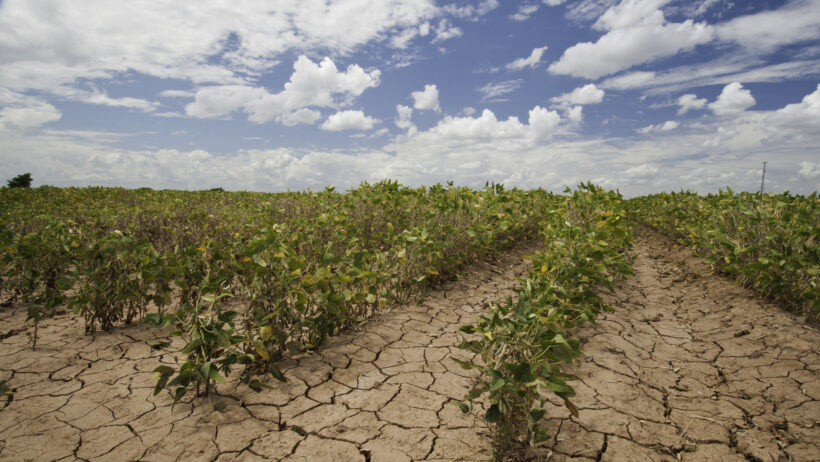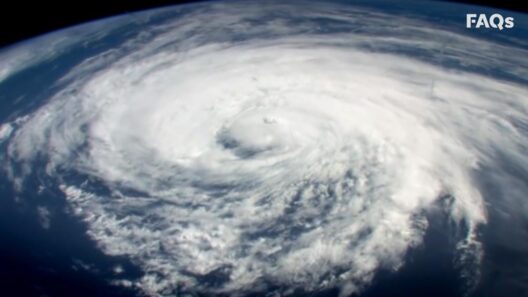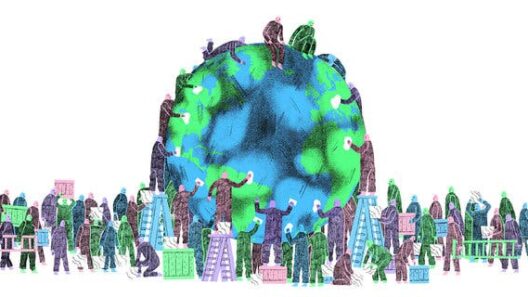As the world grapples with the consequences of climate change, three elements have emerged as pervasive threats: droughts, heatwaves, and dust storms. Collectively, they form a triad that signifies the dire implications of a warming planet. Are we, as a global society, prepared to confront this formidable challenge? The answer carries profound implications for our future, one that demands immediate attention.
Droughts, often described as periods of abnormally dry weather, have far-reaching implications on ecosystems, agriculture, and water resources. In regions where precipitation is already scant, extended dry spells can lead to catastrophic water shortages. This phenomenon is exacerbated by rising temperatures. The interplay of climate dynamics has rendered droughts more acute and frequent across the globe. In the American West, for instance, an alarming pattern of prolonged drought has emerged, leading to the depletion of reservoirs and aquifers. As the saying goes, “What once was,” the lush landscapes of fertile farmland now stand parched, with farmers staring at cracked soil and broken dreams.
Heatwaves, characterized by prolonged periods of excessive heat, often accompany drought conditions. These meteorological events strain energy resources as communities grapple with the demand for cooling systems to alleviate heat stress. This vicious cycle of excessive heat leading to increased energy consumption further contributes to the greenhouse gas emissions that fuel climate change. Vulnerable populations, particularly the elderly and those with pre-existing health conditions, bear the brunt of these stifling conditions, leading to heightened mortality rates. But why is it that some areas experience unbearable heat while others remain temperate? The answer lies in the complex web of atmospheric conditions that dictate climate patterns.
Moreover, dust storms have emerged as a menacing consequence of increasing aridity. When moisture-laden winds are insufficient to sustain the vegetation, the soil becomes loose and dust-laden, eagerly swept up by the winds. These dust storms not only travel vast distances but also carry with them a plethora of health and environmental hazards. From respiratory issues in urban areas to the deposition of nutrients in oceans, dust storms serve as a stark reminder of the interconnectivity of our planet’s systems. The question then arises: can we manage to protect our air quality and health while dealing with the concurrent threats of droughts and heatwaves? Addressing this challenge becomes paramount in the dialogue surrounding climate mitigation strategies.
As climate change accelerates, the implications of this trio of phenomena extend beyond immediate environmental impacts. Agricultural output is likely to diminish considerably due to unpredictable climate variability. Farmers face the daunting task of adapting to these conditions with limited resources and support. The agricultural sector is significantly influenced by moisture availability; thus, innovative water management practices and drought-resistant crops have become pivotal in sustaining food security. However, the larger question remains: how can we promote sustainable agricultural practices that are both economically viable and environmentally sound?
In urban areas, the effects of heatwaves can influence not only health outcomes but also urban planning. City infrastructure often lacks the resilience to withstand such extreme temperatures, leading to increased energy consumption and infrastructural strain. The urban heat island effect exacerbates this issue, where urban areas become significantly warmer than their rural counterparts due to human activities and land use changes. Transitioning to green infrastructure, investing in urban forestry, and promoting reflective surfaces can mitigate these impacts. It’s crucial to consider: can cities adapt quickly enough to the overwhelming challenges posed by their evolving climates?
Moreover, the issue of dust storms cannot be ignored. They have implications for regional air quality, public health, and even climate systems far removed from their origin. Dust can affect weather patterns by influencing rainfall and temperature, creating a ripple effect that amplifies the impacts of drought and heatwaves. Investing in land management practices that promote soil stability and protect against erosion will play a critical role in combating dust storms. But how can policymakers effectively incentivize such practices among landowners, especially in regions facing economic challenges?
Educational initiatives aimed at raising public awareness about sustainable practices and climate resilience are vital in addressing these interconnected challenges. Individuals and communities armed with knowledge can advocate for policies that prioritize ecological stewardship and climate adaptation. Moreover, there lies an inherent challenge in reshaping public perception about climate issues; often, the urgency is eclipsed by daily distractions. So, how can we foster a collective sense of responsibility that transcends personal interests and speaks to the greater good of our planet?
The science is clear: the trajectory of our planet is heading toward a future where droughts, heatwaves, and dust storms will become the norm rather than an aberration. Collective action is not merely beneficial; it is imperative. Investing in renewable energy sources, enhancing water conservation efforts, and promoting climate-resilient practices are essential steps we must take. The interplay of these elements creates a pressing challenge that beckons immediate and sustained responses. As we navigate this defining moment in our relationship with the environment, let us ponder: what legacy do we wish to leave for future generations? It is time to transform the conversation from one of despair to one of actionable hope and tangible solutions.
In conclusion, the triad of droughts, heatwaves, and dust storms presents multifaceted challenges that echo through our ecosystems, communities, and economies. As we stand at this critical juncture, the choices we make today will reverberate through time. The urgency is palpable; the time to act is now.








